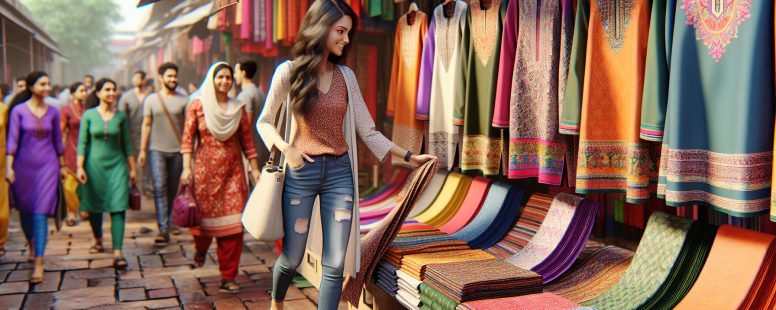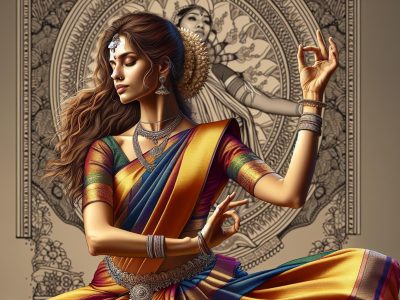Understanding the Difference Between Kurta and Kurti: Key Features, Styles, and Tips
Picture yourself strolling through a bustling market, vibrant fabrics draped in every imaginable hue catching your eye. Among the racks of traditional Indian attire, you spot kurtas and kurtis—both elegant, both timeless. But as you admire their intricate designs, a question lingers: what truly sets these two apart?
While they may seem similar at first glance, kurtas and kurtis carry distinct identities rooted in culture and style. One exudes versatility with its longer silhouette, while the other embraces modernity with its shorter charm. Understanding these differences not only helps you choose the perfect outfit but also deepens your appreciation for this rich heritage.
Understanding Kurta And Kurti
Kurtas and kurtis, though similar in traditional roots, differ significantly in style, length, and purpose. Recognizing these differences enhances your ability to choose attire suitable for various occasions.
What Is A Kurta?
A kurta is a long garment that often extends below the knees. It features a straight-cut design with side slits for ease of movement. Traditionally worn by men and women, kurtas are versatile pieces paired with churidars, salwars, or even jeans for casual settings.
Cotton kurtas are ideal for daily wear due to their comfort in warmer climates. Silk variants bring elegance to festive or formal events. Embroidered kurtas with intricate patterns reflect regional craftsmanship across India.
What Is A Kurti?
A kurti is shorter compared to a kurta, typically ending at the waist or hips. Known for its modern appeal, it’s popular among younger generations seeking trendy options without compromising cultural aesthetics.
Pairing options include leggings, palazzos, or skirts depending on the occasion and personal style. Unlike kurtas that lean towards traditional designs more prominently, kurtis incorporate contemporary cuts like asymmetrical hems and cold-shoulder sleeves.
Key Differences Between Kurta And Kurti
Length And Design
Kurtas extend below the knees, offering a modest and traditional look. Their straight-cut design often includes side slits, enhancing comfort and mobility. For example, men’s kurtas paired with churidars emphasize cultural elegance, while women’s kurtas styled with salwars exhibit timeless charm.
Kurtis end at the waist or hips, reflecting modern fashion trends. They feature contemporary designs like asymmetrical hems or flared silhouettes. A young professional might pair a printed kurti with jeans for casual workwear.
Style And Fit
Kurtas generally have a looser fit to ensure ease of movement. This relaxed style makes them suitable for formal and everyday settings alike. For instance, cotton kurtas are common in summer due to their breathability.
Kurtis usually offer a more tailored fit that accentuates the body shape. Trendy variations include A-line cuts and peplum styles, appealing to those seeking fashionable options.
Occasion For Wear
Kurtas suit both formal gatherings and religious ceremonies thanks to their versatile nature. Silk kurtas embroidered with zari work are ideal for weddings or festive occasions.
Kurtis cater predominantly to casual wear but can transition into semi-formal settings when accessorized appropriately. An office meeting could call for a solid-colored kurti styled with palazzo pants.
Regional And Cultural Significance
Kurtas hold deep cultural significance across South Asia and are worn by both men and women during festivals such as Diwali or Eid. They’re often associated with tradition and heritage.
While kurtis are less culturally symbolic, they represent evolving urban fashion influenced by global trends. Younger audiences favor them for their adaptability in blending traditional elements with Western aesthetics.
Fabrics And Patterns
The choice of fabrics and patterns significantly impacts the look, feel, and purpose of kurtas and kurtis. While both garments share some overlap in their material choices, they often differ based on traditional preferences and modern trends.
Common Materials For Kurtas
Kurtas often incorporate breathable fabrics like cotton, linen, or silk for their versatility across seasons. Cotton kurtas provide comfort during hot weather, making them ideal for everyday wear. Silk variants, embellished with zari work or embroidery, are popular for weddings or religious ceremonies. Woolen kurtas serve as practical options in colder climates.
Men’s kurtas frequently feature thicker cotton blends or khadi to balance durability with elegance during formal events. Women’s kurtas might include lightweight chiffons or georgettes adorned with intricate detailing.
Common Materials For Kurtis
Kurtis typically use lighter materials such as crepe, rayon, viscose blends, or polyester to cater to contemporary styling needs. These synthetic fabrics allow for vibrant prints and trendy silhouettes while ensuring affordability.
Younger audiences favor chiffon-printed kurtis paired with jeans for casual outings due to their ease of maintenance. Festive occasions might call for velvet kurti designs featuring mirror work or sequins that blend tradition with modernity.
Variation In Patterns And Embroidery
Patterns on kurtas usually lean toward traditional motifs like paisleys, florals, or geometric shapes inspired by regional art forms such as block printing from Rajasthan. Embroideries like chikankari from Lucknow elevate plain cotton kurtas into elegant attire suitable even at formal gatherings.
Styling Tips For Kurtas And Kurtis
Styling kurtas and kurtis effectively enhances their appeal. Understanding these garments’ distinct features helps you create looks suited for diverse occasions.
Styling Kurtas
Choose appropriate bottoms to match the kurta’s length and formality. Pair a long, straight-cut cotton kurta with churidars or leggings for a traditional appearance. Opt for jeans or slim-fit trousers if you’re aiming for a fusion style suitable for casual outings. For men, combining silk kurtas with dhotis creates an elegant ensemble perfect for weddings or festive events.
Add accessories sparingly when styling kurtas. Women can wear statement earrings with embroidered kurtas, while men might add a pocket square to plain designs. Experimenting with scarves or dupattas also elevates formal looks.
Footwear complements the overall outfit when coordinating colors and styles. Leather sandals work well with ethnic combinations like silk kurtas and churidars, while juttis match vibrant patterns on festive attire.
Styling Kurtis
Pair kurtis with versatile bottoms to adapt them across different settings. A short printed kurti works perfectly over skinny jeans if you’re creating contemporary office wear, whereas palazzos paired with flared rayon kurtis offer all-day comfort during summer.
Layer your outfit creatively using jackets or shrugs over plain kurtis in cooler weather conditions. Adding belts around waist-length pieces accentuates silhouettes and provides modern flair without overshadowing traditional roots.
Focus on minimal yet impactful jewelry selections that reflect personal style preferences—sleek necklaces enhance solid-colored asymmetric hemline designs more than heavy adornments do in casual contexts.
Conclusion
Understanding the distinction between kurtas and kurtis helps you appreciate their unique styles, cultural roots, and versatility. Whether you’re drawn to the timeless elegance of a kurta or the modern flair of a kurti, both garments offer endless possibilities for expressing your personal style. By choosing the right fabric, fit, and accessories, you can effortlessly adapt these pieces to suit any occasion—be it traditional celebrations or casual outings. Embrace their charm and make them an integral part of your wardrobe while celebrating the blend of tradition and contemporary fashion they represent.
- King vs Queen Size Bed: An In-Depth Comparison for Your Perfect Mattress Choice - October 29, 2025
- Krill Oil vs Fish Oil: Key Differences, Benefits, and Choosing the Right Omega-3 Source - October 29, 2025
- Understanding the Difference Between OT and PT: A Comprehensive Guide - October 29, 2025







